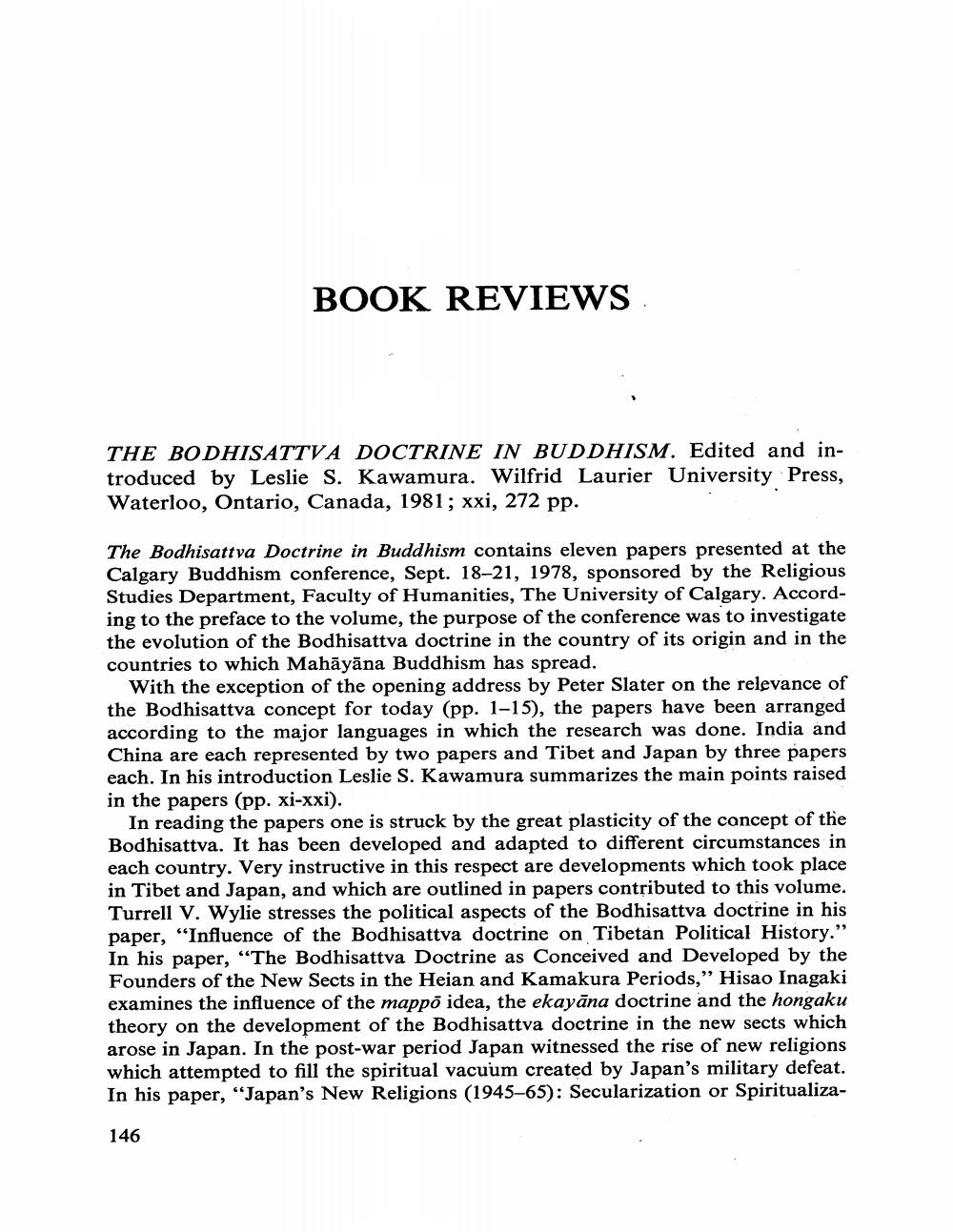Book Title: Book Reviews Author(s): J W De Jong Publisher: J W De Jong View full book textPage 1
________________ BOOK REVIEWS THE BODHISATTVA DOCTRINE IN BUDDHISM. Edited and introduced by Leslie S. Kawamura. Wilfrid Laurier University Press, Waterloo, Ontario, Canada, 1981; xxi, 272 pp. The Bodhisattva Doctrine in Buddhism contains eleven papers presented at the Calgary Buddhism conference, Sept. 18-21, 1978, sponsored by the Religious Studies Department, Faculty of Humanities, The University of Calgary. According to the preface to the volume, the purpose of the conference was to investigate the evolution of the Bodhisattva doctrine in the country of its origin and in the countries to which Mahāyāna Buddhism has spread. With the exception of the opening address by Peter Slater on the relevance of the Bodhisattva concept for today (pp. 1-15), the papers have been arranged according to the major languages in which the research was done. India and China are each represented by two papers and Tibet and Japan by three papers each. In his introduction Leslie S. Kawamura summarizes the main points raised in the papers (pp. xi-xxi). In reading the papers one is struck by the great plasticity of the concept of the Bodhisattva. It has been developed and adapted to different circumstances in each country. Very instructive in this respect are developments which took place in Tibet and Japan, and which are outlined in papers contributed to this volume. Turrell V. Wylie stresses the political aspects of the Bodhisattva doctrine in his paper, "Influence of the Bodhisattva doctrine on Tibetan Political History." In his paper, "The Bodhisattva Doctrine as Conceived and Developed by the Founders of the New Sects in the Heian and Kamakura Periods," Hisao Inagaki examines the influence of the mappo idea, the ekayana doctrine and the hongaku theory on the development of the Bodhisattva doctrine in the new sects which arose in Japan. In the post-war period Japan witnessed the rise of new religions which attempted to fill the spiritual vacuum created by Japan's military defeat. In his paper, "Japan's New Religions (1945-65): Secularization or Spiritualiza 146Page Navigation
1 2 3 4 5 6
